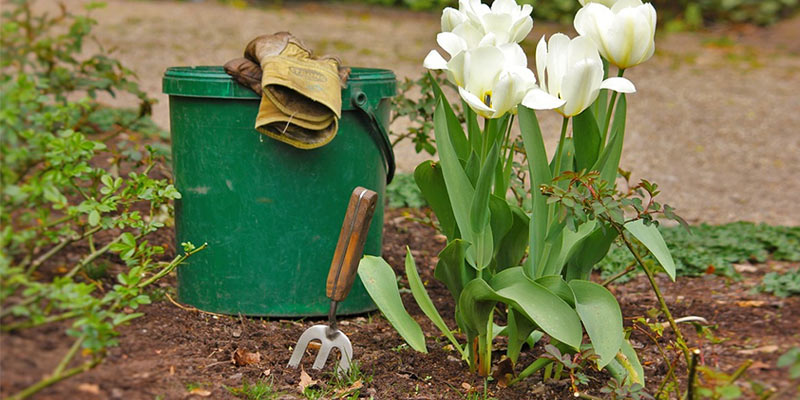
If you have a bit of a big task ahead in revamping your garden you will need to think about sourcing the right tools for the job. Unlevel ground, overgrown weeds, and other obstructions can mean undertaking major changes before you can even start planting and pruning. Whether it’s prepping to lay turf, transplanting trees or adding extra garden features you will need to know how to access the right tools for hire.
Basic tools
Sometimes it might be necessary to level out your lot, in order to be able to start-from-scratch with your landscaping. If you have divots, slopes and inclines and other issues that make your yard a less-than-ideal canvas in which to create your dream garden or lawn, then you will want to take care of the problems in one fell swoop. That’s where the right tools comes into the equation.
At a bare minimum, there are a few standard tools that will hold you in good stead. You’ll likely need to consider getting your hands on a long-handled shovel (with a square blade), a decent wheelbarrow to move soil from one location to another, a rotary hoe (tiller), a lawn roller, a landscaper’s rake, a carpenter’s level and a pair of heavy-duty gloves. This web retailer offering gardening tools hire should set you off in the right direction.
Measuring and prepping
However, before you start on the tools you need to make sure to check that your soil is at optimal moisture level. If your soil is dry and dusty you will need to water it to a depth of at least 6 inches. Do watch out though should it be rain-soaked, as you will need to wait for it to dry out to a level that is easy enough to work with (wet soil can be very heavy and more than a bit difficult).
From here, you will need to get started on prepping the ground for whatever new plans you have in mind, whether that be laying turf, creating garden beds or even just planting seeds on bare earth. Mark out the area you wish to work on and gauge just what needs to be done in order to get a fair playing field. You can use your carpenter’s level and/or stakes and a string line in order to ascertain this measurement.
Levelling soil
Once you understand where you need to excavate and/or top up your bare earth in creating that flat surface, you will need to perform some manual labour in shifting things around. For smaller areas of earth that are sitting too high, work on leveling down the ground by removing grass and earth by cutting at it with a shovel. Conversely, your wheelbarrow is your trusty friend in moving those run-of-the-mill amounts of soil. For heavy loads, you can always opt for a motorised variant to really up-the-ante on this crucial yet slightly tedious step.
For more expansive plots you could consider using a lawn scarifier/dethatcher to make your job that much more efficient. This is of great benefit as it will it help to cut deftly through the soil. It will also help aerate it and make it more pliable and less susceptible to weeds taking hold. Plus, it will remove debris, grass cuttings and moss that often sit on top of your yard surface and make it hard for moisture retainment (that’s what your plants and trees need to access the most).
Laying the foundations
After you have gotten things nice and level, you should always take the time to cover up the area with a balanced mixture of topsoil, sand and either a compost, manure or fertiliser. Ensuring that your soil is nutrient-rich will give your garden and lawn the best possible start in laying the foundations for the growth and longevity of all your hard work.
Here’s the point where you can pick up your landscaper’s rake and use it spread this mixture in a uniform layer. Make sure you measure as you go (to keep tabs on the keeping things level overall). Your water-filled roller will now come into play in pressing down the soil adequately. They are a convenient mechanism in establishing and maintaining a lawn, and can also be used in the seeding process. They take out bumps in a very methodical fashion. Using this tool in laying down new turf is always highly recommended – as it facilitates a high level of contact between the roots and the ground.
Other considerations
Whilst almost everyone enjoys the benefits of a garden, did you know that it is now a legislative requirement (in VIC, Australia) that a certain portion of your property meets a garden area requirement? This has been introduced in the Neighbourhood Residential Zone and General Residential Zone aspects in town planning schemes and is aimed to ‘protect the open character of our suburbs, towns and cities’. So, it’s never been more important to establish and maintain a lawn area or garden (keep in mind that this may filter to other State governments adopting a similar approach in time). Having access to the right tools can certainly make this essential requirement a lot easier to manage.
In conclusion, whether you are landscaping or maintaining a garden for the beauty and lifestyle benefits, to aid property resale value or in meeting relevant regulations; it’s very important to select and use the right tools to make the entire job that much easier and more successful. We hope the above guide will assist you in this process and you are enjoying a flourishing lawn and garden in no time at all!
